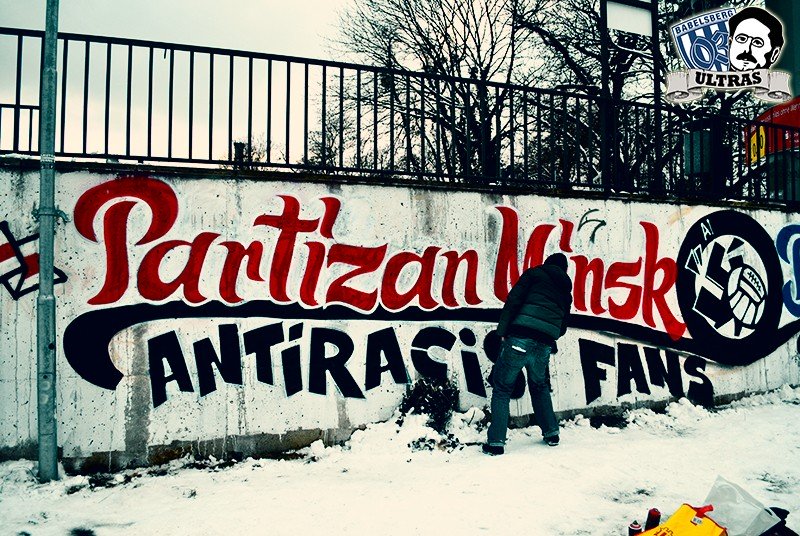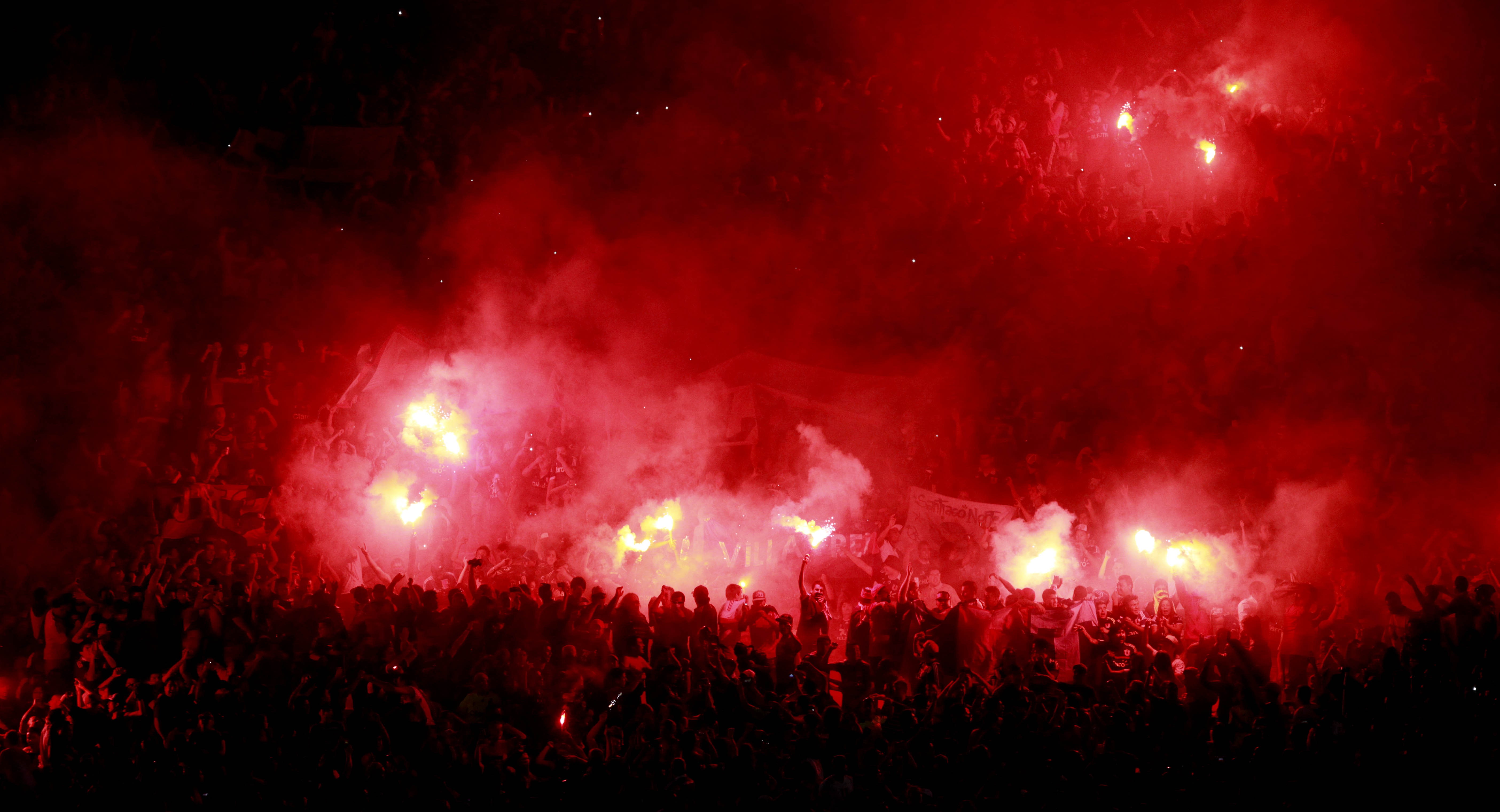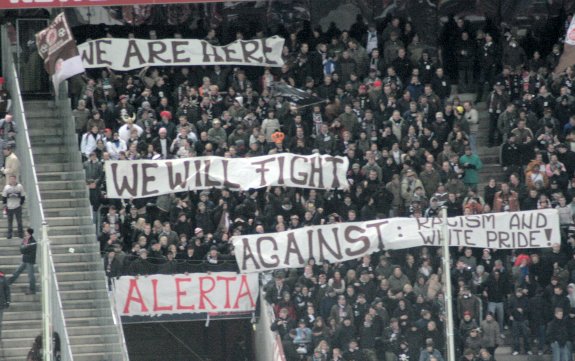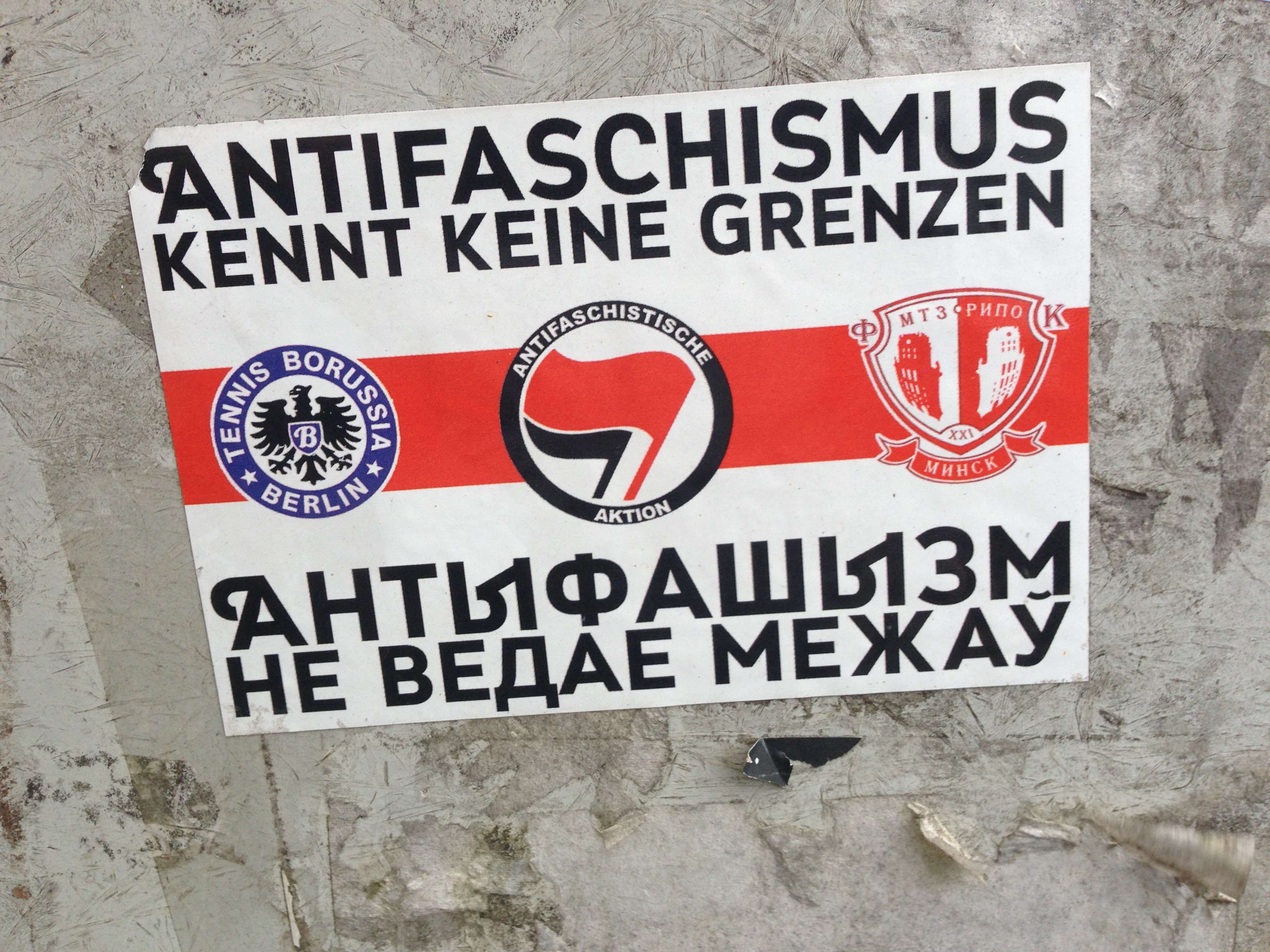Filed under: International Coverage, Lifestyle

With the ascension of the current regime, the full weight of the corporate oligarchy and the far-right falls on many of us. In confronting this assault, we are challenged to conceive of new ways of achieving old goals, while also attempting to broaden radical disobedience and alleviate the pressure placed on us. This is an ongoing process obviously, as demonstrated by the countless innovations of our comrades in the face of ICE raids, federally sanctioned ecological repression, and rising fascism. However the fact remains that many current strategies are focused around reactive confrontation and siege style resistance, leaving little room to go on the offensive against our enemies or hold new territory. Despite some headway in normalizing anarchist perspectives and tactics, radical culture and politics remain elusive and alien to many in the general public.
When looking for examples of decentralized and widespread militant organizing, an unlikely example stands out. The phenomenon of football supporters known as “ultras” offers an unlikely example of such resistance. Ultras remain a relatively unfamiliar dynamic in sports within the so called United States. This stands in contrast with other parts of the world, where they are often depicted as the harbingers of hooliganism, racism, the drug trade, and right wing populism. Without downplaying the enormous presence of the far right among ultras, this depiction is to a degree an oversimplification of the causes and realities of political soccer. In particular, such a perspective glosses over the fact that political trends among ultras are more often than not a reflection of larger sociopolitical struggles, as opposed to a cause. In keeping with that reality, antifascists, anarchists and radicals also have a long history of involvement and connection to ultras culture.
Ultras and hooliganism take many forms in different societies, but generally they share a few basic structures. First and foremost, ultras base their organizing around a specific football club, often for political, religious or ethnic reasons. Ultras are responsible for large and colorful demonstrations, complete with banners, mass chants and flare displays. The groups also organize travel to away games, usually somewhat covertly so as to avoid police action or attacks from opposing fans. Many ultras, especially those with a large hooligan presence, operate on some variation of a gang structure, with specific membership, rules and anti-snitching codes. Decision making varies, with some organizations maintaining a strict hierarchy, but many others also using some form of consensus.
TIFO DISPLAYS
Tifo displays are large coordinated displays of banners, chants, flares and other forms of art. Primarily intended to demonstrate support for the team or distract or offend another side, they are frequently used for political statements. They offer a good place to espouse political views and practice coordinated artistic shows in an environment that is not necessarily explicitly political. Controversial TIFO shows also tend to get media attention, with some organizations using them as an opportunity to level criticism, mockery or solidarity on subjects that are traditionally excluded from the media.
*A display by Glasgow Celtic fans, an historically ethnically Irish team, connecting British colonialism in Ireland and contemporary colonialism in Iraq and Afghanistan.
ORGANIZED GROUP FIGHTING AND VIOLENCE
Ultras and hooligans have a well known and generally disgusting tradition regarding riotous behavior and organized mob violence. Many leftist supporters are not exempt from this behavior, however the way such violence manifests itself among leftist communities is worth paying attention to. Among clubs associated with marginalized and leftist communities, a strong tradition of collective, well organized self defense and anti-police practices is often found. In light of a number of trends of populist right-wing violence, state sanctioned arrest of “unpersons” and emboldened police, the necessity of creating physical self defense and anti-snitching culture is important. In places like Ukraine, Belarus, Israel or Turkey, which have dealt with these trends for longer and in a more extreme context, the strategies that have emerged among anti-fascist and working class communities are important to examine. On that note, even the physical strategies employed by right-wing and nationalist ultras should be looked at within the context of their efficiency in an anti-government and street fighting context. Many of these strategies are adaptable as self-defense and consensus based security models. A few examples of leftist self-defense, violence and anti-police activity can be seen among the team-by-team break down below. Ultras have played a crucial role in street battles in Tahrir Square and the Euromaidan. Although in both these cases, these groups were affiliated primarily with nationalist-reform movements, they still exemplify their effectiveness during street actions. In both cases, the presence of ultras meant that the police were met with dedicated and well organized cells who were already trained in group confrontation and anti-surveillance tactics.
The reality of cis-male dominance in professional sports fandom in general is undeniable. It is imperative that any organizing in such communities is done from a bottom-up feminist and liberatory perspective. Examples of ultras groups that have maintained and expanded a horizontal and feminist/wtf culture include Clapton F.C. and St. Pauli. Both clubs are expanded on below. In studying the ultras model, the goal is not necessarily to copy it wholesale. The ultimate purpose should be to strategically occupy and radicalize the space, as well as take lessons from the crowd tactics employed by ultras. In adapting such a space to a liberatory and anti-patriarchal culture, radicals are tasked with initiating the conversations and connections that foster a self perpetuating antifascist community. When looking for recreational sports communities that might benefit the most from engagement and solidarity, wtf leagues should stand at the center of attention. Women’s leagues, from the recreational to professional level, exemplify a tight-knit community that receives a fraction of the financial and physical support of their male counterparts. In the context of the hyper-patriarchal structures currently expanding within the US, these communities seem like a good place for local organizers to reach out and form relationships.
By that same token, such organizing does not necessarily need to occur within a professional league or even within soccer communities at all. Public recreational and loosely organized pickup leagues often have a disproportionate representation of working class and targeted communities. As groups like the Clapton Ultras have demonstrated, small clubs with close connections to targeted and marginalized communities can be extremely responsive to direct engagement with radical organizers. In the context of ICE and right-wing terror attacks, radicals can make a major impact by reaching out and making the effort to enter into these spaces as participants and friends. Friendship and comradery should come first, politics can be discussed once trust is established. The assumption that marginalized and targeted communities should be grateful or responsive to political radicals reaching out to them out of the blue is entitled at best. It is the job of the radicals, particularly white radicals, to reach out in a multifaceted and sincere way to marginalized communities, not just politically but also as neighbors.
There are many examples of antifascist and anti racist Ultras and football clubs. These exist at many scales and degrees of radicalism, from explicitly working class neighborhood teams to professional level traditions associated with revolutionary struggles. A few examples include:
CLAPTON F.C.
Clapton F.C. is a small East London football team playing in the lower leagues. Several years ago, local fans and neighborhood members frustrated with the price, politics and corporate dominance of the premier league made a concentrated effort to refocus their community on their local lower division team. This was done in tandem with an explicitly antifascist and anarchist organizational strategy, with the Clapton Ultras welcoming migrant and refugee communities, queer communities and working class families to attend the games together.
The Clapton Ultras have been involved in violent street battles with the British EDL, solidarity fundraising and support for migrant communities and boycotts against corporate interests in football. Their struggle against right-wing corporate team ownership has been well documented. The Clapton ultras recently won set match prices and official representation in club decision making after a successful boycott. A video on their political activities and community boycott against corporate interests in their team can be found here. An article on the progression of this process can be found here.
UNIVERSIDAD DE CHILE/LOS DE ABAJO
“Los de Abajo,” the ultras of Chilean team Universidad De Chile, are known for their roots in the dissident movement against Augusto Pinochet’s regime. They are active in politics, and the organization has played a roll in left-wing political organizing and campaigning several times in the last decade including in the formation of a leftist coalition in the early 2000s. In the early to mid 2000s the supporters ran a free school for at risk juveniles to study for pre-university aptitude tests.
Due to the hyper-expensive and class exclusionary Chilean education system, this type of opportunity was extremely valuable. The school subsequently closed under state pressure, police raids, inflated education costs and accusations of lawlessness. Los de Abajo are often associated with petty crime by the media and local government, but their political activism and close ties to Santiago’s working class are undeniable. A video of Los de Abajo fans participating in a left-wing march against the government and Pinochet’s historical Junta can be found here.
ST PAULI F.C.
Based in Hamburg’s red light district, St. Pauli is a professional football club that generally floats between the three highest leagues in Germany. The fan base is notorious for its roots in the 80s squatter punk and feminist scenes, having been heavily involved in resistance to gentrification and nationalism in the subsequent decades. They are notable for being one of the only examples of a heavily left-leaning team that also exists on an order of magnitude larger than many left leaning teams, with a massive stadium and an ownership and management structure that heavily involves the fan’s input and consensus.
The team also claims to be the most popular among women in Germany, putting feminist and wtf rights at the center of their political actions. More recently, their supporters have been active in refugee and migrant communities and anti-pegida resistance. The team’s skull and crossbones have become a well known symbol of left-leaning and alternative football culture, and can often be seen among left-wing clubs around the world. A short documentary on the team’s history can be found here.
PARTIZAN MINSK
Hailing from Minsk, Belarus, Partizan Minsk represents one of the most extreme and warranted examples of violent, local antifascist organizing around a football team. Belarus, notorious for being a xenophobic, fascist dictatorship, offers an extremely unforgiving environment for queer, leftist and non-European individuals. The government tolerates right-wing gangs to support their police state, and many Belarusian soccer clubs are heavily populated with neo-nazis and fascists.
Partizan Minsk has offered a safe environment for targeted communities, while also taking the fight to the right by training its members in group combat and self-defense and involving them in antifascist activities within their own communities. Partizan Minsk has faced government blacklisting and defunding in addition to right-wing violence. Despite relegation, the remnants of the team retain a small core of antifascist support and continue to struggle for fair treatment by the Belarus government. A video of Partizan Minsk youth facing off with neo-nazis in a pre-arranged fight can be found here.
HAPOEL TEL AVIV
Hapoel Tel Aviv are often known as the vanguard of the Israeli left. The club predates the existence of the state, with close ties to Israeli socialism and the trade unionist left, having been owned by Israel’s largest trade union for the vast majority of its history. Fans, known as “the reds,” still own a 20% share of the team and are heavily involved in decision making. Hapoel Tel Aviv also has close ties to the Israeli Arab community, having offered a welcoming environment that is also directly in political opposition to the xenophobic and fascist Israeli right. In the hyper-sectarian environment that is modern Israeli politics and populism, Hapoel represents one of the few examples of an organized and explicitly leftist and antifascist space. Hapoel are bitterly opposed to Beitar Jerusalem, Israel’s notoriously xenophobic right-wing club, and fans from both sides have been involved in politicized and ethnic violence against each other for years. Hapoel are also known for violent opposition to Israel’s highly militarized police, as well as crossover and close connections with their sister basketball team’s fan base.
CELTIC F.C.
Celtic enjoys an extremely controversial reputation. Hailing from the predominately Irish and Catholic parts of Glasgow, Celtic’s fan base are famous for their aggressive support for Palestine, and the republican movement in Northern Ireland. The club has been the bastion of Glasgow’s poor Irish neighborhoods for years, and that sectarianism has long played out within the rivalry between Celtic and other Scottish and British fan bases. In the last decade, there has been an effort by Ultras calling themselves the Green Brigade to bring a more organized left wing message to the fan culture.
This has had mixed results, with ethnic tensions still playing a major roll in criticisms of Celtic ultras. More recently, the Green Brigade has become involved in anti-police and anti-prison activism, a relatively organic result of disproportionate police repression towards the fans. Like St. Pauli, Celtic ultras represent a large and commercially successful team, and their brand has become a symbol among other left-wing fans.











